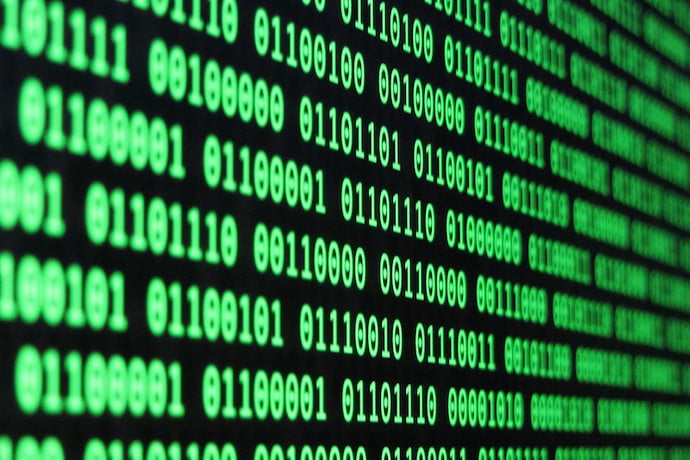How many languages do you speak? Is one of them Computer? Even though we don’t typically converse with our computer, its language–known as binary—is pretty easy to learn.
Counting in binary is a little different than how we learn to count in school. We use a system called “base 10,” which allows us to use all the numbers in our numerical system, from 0 to 9. Base 10 says that when we count past 9, we add a one to the left of the number and reset the original number to 0, to make 10. We then do that for 20, 30, 100, 1000, and so on.
Who’s on Third?
Binary, however, uses base 2. And what this means is that it’s only allowed to use the numbers 0 and 1. When you count past 1, you don’t go to 2 like our counting system, because base 2 doesn’t let you use that number. Instead, much like above, you add one to the left of that number and reset the original number to 0.
So, instead of counting like this:
0, 1, 2, 3, 4, 5, 6, 7, 8, 9, 10…
You count like this:
0, 1, 10, 11, 100, 101, 110, 111, 1000, 1001, 1010
Weird, huh? After only ten numbers, we’re already at 1010 in base 2. This is why sometimes, in popular culture, “computer talk” is represented with 1s and 0s; it’s what binary looks like.
So why base 2? While humans are really good at wrapping their brains around complex systems, computers are much better at doing simple tasks really quickly. And, in base 2, you can break down each 1 and 0 into an “on” and “off” state. Your computer can then use this “on” and “off” language to read and write data.
Come on over
If this is confusing, imagine that you and your friend next door devise a way to let each other know if you can go to the other’s house for the day. To do this, your friend puts a device in the window with two light bulbs on it, which can be toggled on and off.
Then, you both agree on a system. If only the left light bulb is turned on, you can’t come over today. If the right one is on, you can visit. If both are turned on, it means that you can come over, but not right now.
When you want to visit, you look out your window for the bulb arrangement. You then process which bulbs are off and which are on, and use the result to determine information about what’s going on. In this case, the left bulb is off (0) and the right one is on (1), so you can go to your friend’shouse today. Nice. (A similar one light/ two light binary code was used by Paul Revere back in the day, but that’s another story.)
Of course, computers don’t use little lightbulbs when they use binary. Instead, they use this system in all kinds of ways to transmit and store data.
For example, on your hard disk drive, there are billions of little segments that can be magnetized. When you save something to it, your computer breaks down the data into binary. It
then either magnetizes a section to represent a 1 or de-magnetizes it for a 0. When you load the data again, it reads all the 1s and 0s and translates them back into data.
In this way, computers can store letters of the alphabet in binary, and you can use the same technology to create secret codes. It’s complicated for a human to convert letters to binary, so use this handy online translator.
So now you know computer-speak. Just be sure your whoever you are “speaking” with knows binary as well, or they’ll have no idea how to read your 1s and 0s.
Learn More
Convert Binary to ASCII
https://www.rapidtables.com/convert/number/binary-to-ascii.html
How hard drives work
https://www.explainthatstuff.com/harddrive.html
Binary Language Explained
https://study.com/learn/lesson/binary-language-explained.html
Binary Code
https://en.wikipedia.org/wiki/Binary_code
Language of computers
https://www.youtube.com/watch?v=Z6cSiP93nos
English to Binary Translator
https://lingojam.com/EnglishtoBinary
How to Understand Binary Code
https://www.instructables.com/How-to-understand-binary-code/
Number Bases
https://www.purplemath.com/modules/numbbase.htm
Number bases
https://www.mathsisfun.com/numbers/bases.html
Teaching Binary Code with a Secret Word Challenge
https://beta.scienceinschool.org/article/2021/teaching-binary-code-secret-word-challenge/
Binary Code
https://www.theproblemsite.com/reference/mathematics/codes/binary-code
Weave a Secret Binary Code
https://www.youtube.com/watch?v=w3HugLhkfy4
Alan Turing Binary Code on New £50 Note
https://thenextweb.com/news/alan-turing-bill-binary-code
Convert Text to Binary
http://www.unit-conversion.info/texttools/convert-text-to-binary/

